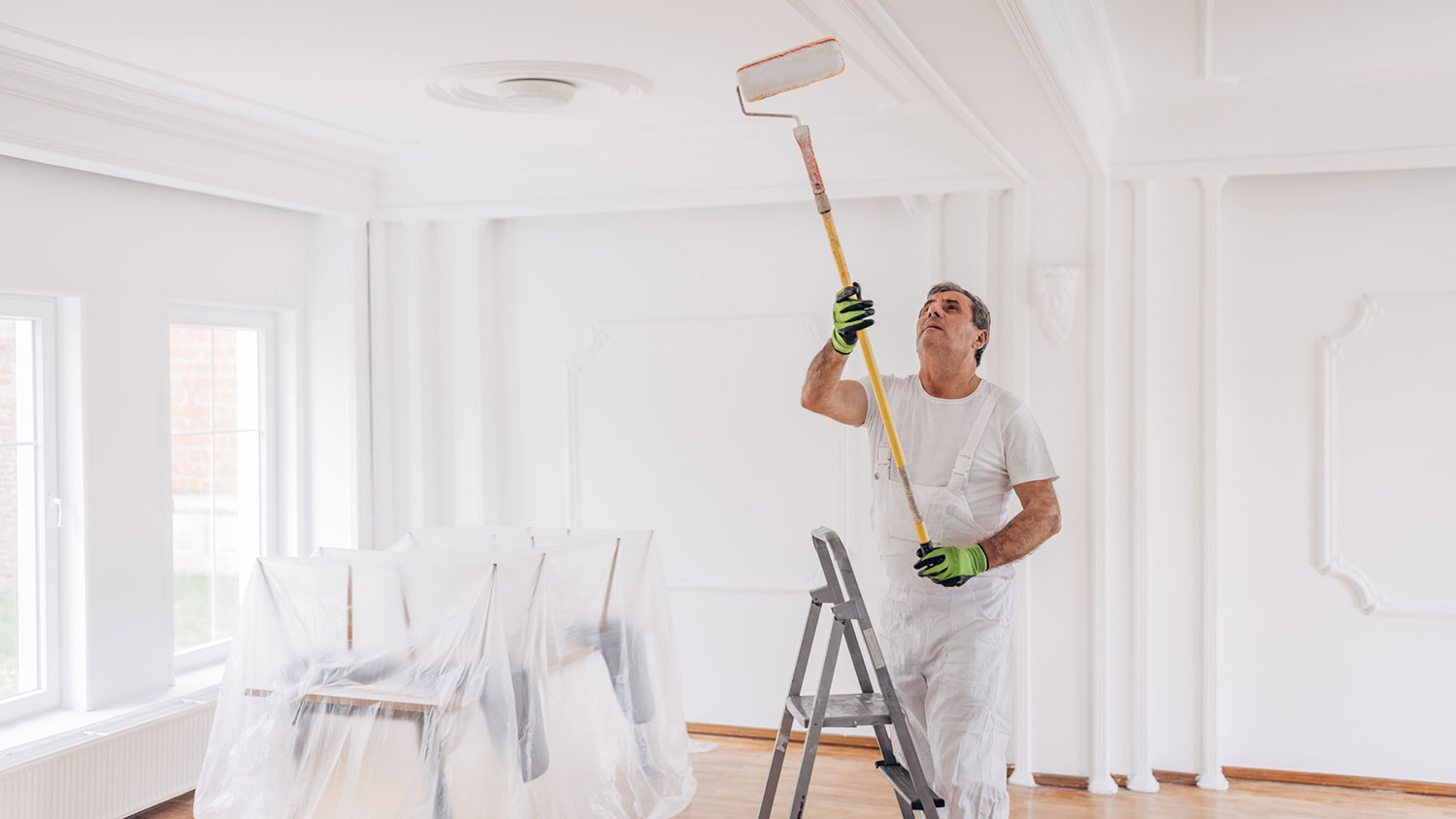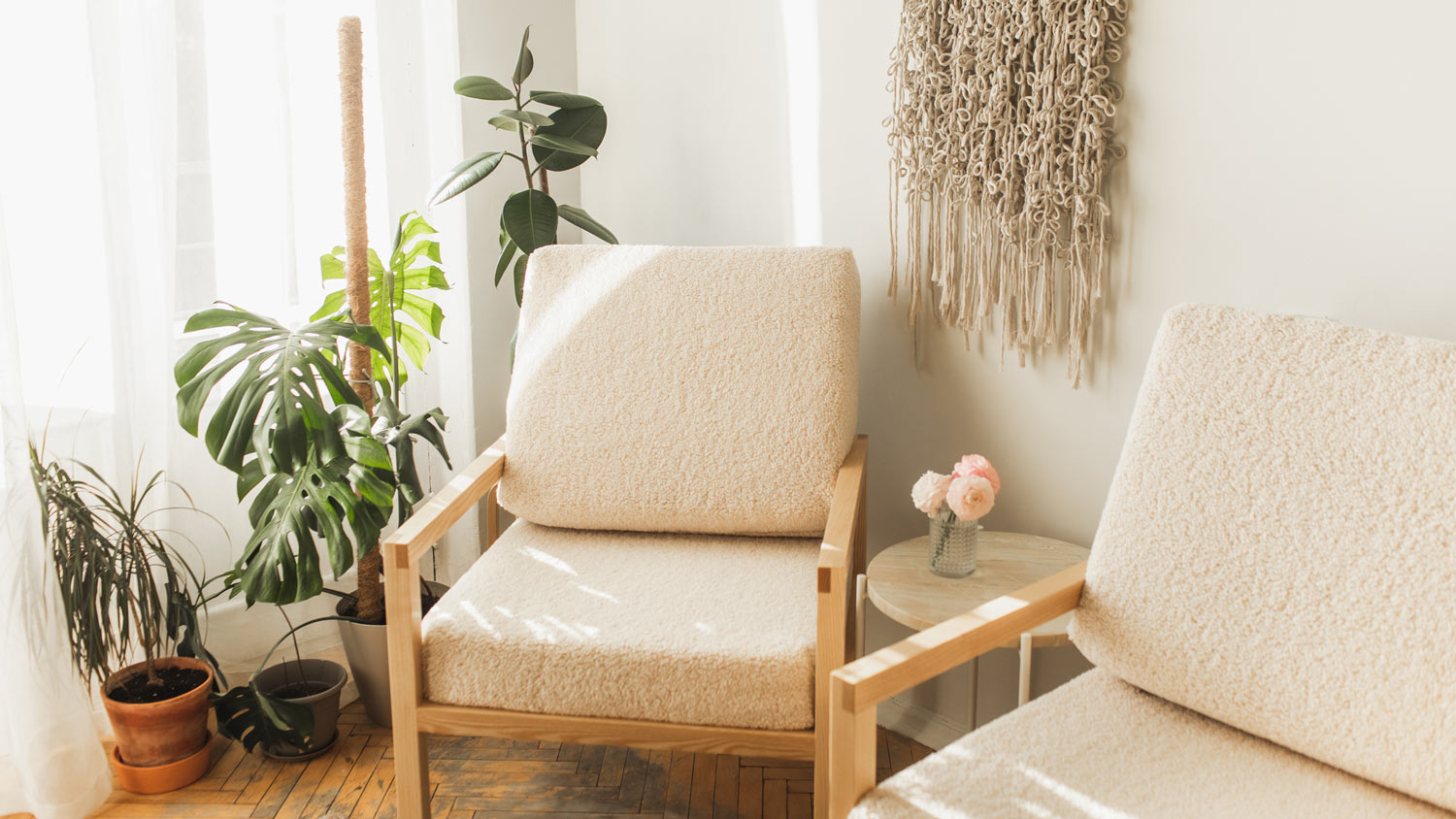
Discover the average furniture reupholstery cost, what impacts pricing, and how to save money on your next project. Get expert tips and cost breakdowns.
Bottom line: Painting over stain is doable


With the right tools, you can paint over stain—but not stain over paint.
Stain has a varnish topcoat that needs to be prepared before painting.
The sheen of paint you choose matters for protection and aesthetics.
Using a sandpaper test is a trick of the trade to determine the underlying surface.
These days, you can put paint on anything—including wood stain. Products abound that are specifically designed for challenging situations, and there’s an endless array of reasons why you’d want to paint over stain. Read on to figure out if this is a good fit for your home renovation project.
First, let’s break down when you should use paint versus stain.

In the past, lead was mixed in with paint as a pigment—it makes for a striking white and deep yellows—and as a method of strengthening the paint mixture against the elements. People began documenting and enforcing restrictions on lead-based paint in the early 1900s, but it wasn’t until 1978 that we officially banned the use of it in our homes. The primary ingredient in most paint these days is titanium dioxide, an acceptable substitute that provides the necessary opacity to enhance variable surfaces like brick, concrete, and wood.
Stain, on the other hand, is typically only used on wood surfaces. An oil-based stain carries the color into the pores of the wood. If you’re eco-minded, there are water-based stain options, but it’s a relatively new field of science. The material is designed to stain and bind to the bare wood permanently, creating the chosen shade in a uniform way.
Stain by itself does not provide protection from the elements and needs to be combined with a clear varnish—also available in oil- and water-based products—to protect the saturated wood below.

There are a handful of paint sheens available at any painting store; each has a place, both aesthetically and functionally. The shinier sheens like high-gloss, gloss, and semi-gloss are commonly used where you need an extra level of protection and washability in the final topcoat of paint. The smoothness of these sheens makes them much easier to scrub down, and as a rule, high-sheen paints are more durable than lower-sheen materials.
Low-sheen paints like flat, eggshell, or satin have certain visual qualities that make them suited for projects that call for deadening the wall and flattening the surface. By removing most of the reflective element of the paint in using these low-sheen products, you’ll effectively hide small imperfections in the wood and create a “flat” appearance. Ceilings and accent walls made from lap siding are well suited for this type of treatment and most low-sheet paint projects are interior projects.
You’ll want to know what the underlying surface is before making a decision on whether you can paint over wood stain because if you use water-based paint on top of an oil-based product it won’t stick. This is how a common DIY project goes wrong, especially in older homes, and results in a massive amount of extra work stripping both layers off to repair the peeling paint.
Do a sandpaper test in an inconspicuous place first by lightly trying to make the varnish powder up. If you’re having trouble sanding it or it just gums up the sandpaper, you likely have a water-based finish and can proceed with using a waterborne primer and paint combination to paint over the stained wood.
If the surface powders up quickly and seems to be easy to sand, you’re dealing with an oil-based varnish and will want to use an oil-based primer along with your choice of oil paint or water-based acrylic paint for the final topcoat. To be extra sure you’re creating a solid finish, do a larger sample with your testing, preparation, and finishing process.
Once you’ve determined the nature of the existing finish that you’d like to paint, lightly sand and clean the surface. Water-based varnishes don’t sand very well, so it’s best to use a light grade of sandpaper such as 120- or 180-grit to keep your sanding effort to a minimum.
For oil-based varnishes, you can use a stronger grade of sandpaper like 50 or 100 grit if it’s necessary to break down the varnish, but the overall goal is not to take the project back to bare wood. You just want a smooth, dust-free surface in preparation for the primer and paint. Use a vacuum or tack cloth to remove even the most stubborn sanding dust and ensure the work looks like you hired a professional carpenter to do the job.
Painting over stain is a more complex DIY project than most. If you have painting experience, particularly with an oil-based paint, you can tackle this home renovation project on your own. If you’re not skilled with paint, however, this is a job best suited for a professional local painter.
From average costs to expert advice, get all the answers you need to get your job done.

Discover the average furniture reupholstery cost, what impacts pricing, and how to save money on your next project. Get expert tips and cost breakdowns.

Wondering how much it costs to refinish a table? Get average prices, cost factors, and tips to help you budget and choose between DIY or hiring a pro.

Get transparent furniture refinishing cost information and learn average prices, cost factors, and ways to save before hiring a pro and starting your project.

Should you restore or refinish furniture? The answer will depend on the extent of the damage and whether you want to update or maintain its current look.

Wondering how much it costs to reupholster a chair? Learn about average prices, key cost factors, and ways to save on your chair reupholstery project.

Give your old furniture a fresh look with these tips for refinishing furniture, perfect for DIYers ready to restore and refresh.